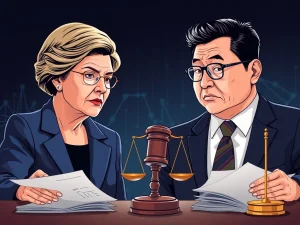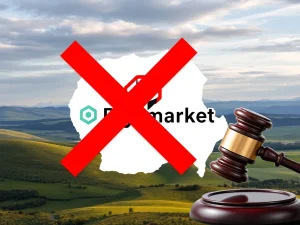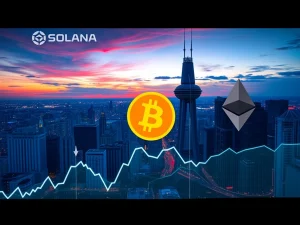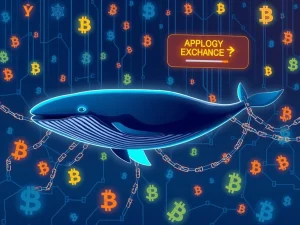Urgent Call: Pump.fun Founder Demands Memecoin Guardrails After Shocking $4 Billion LIBRA Token Collapse
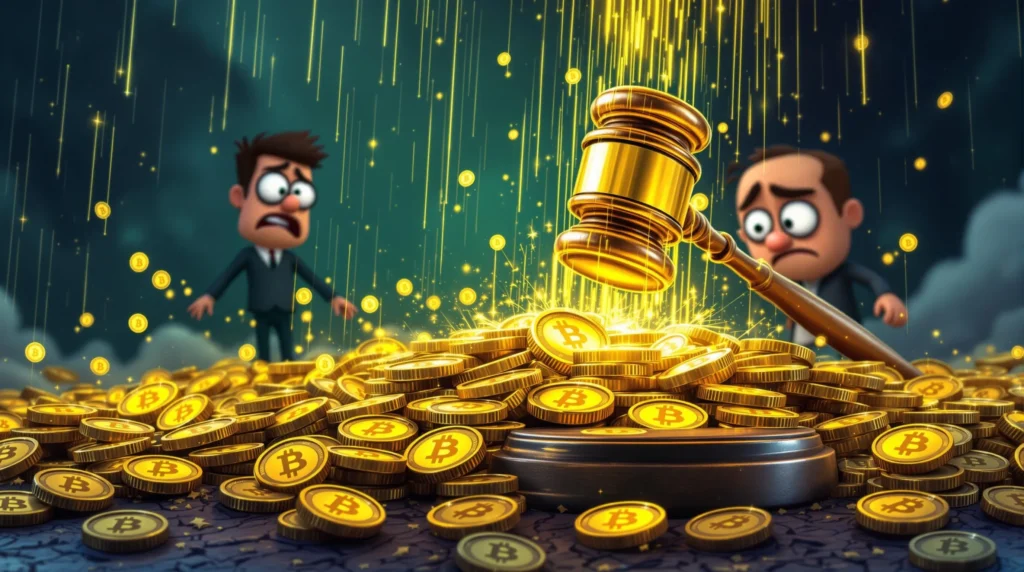
The volatile world of memecoins is once again under scrutiny, and this time, the call for change is coming from within. Alon, the founder of Pump.fun, a platform known for its memecoin launches, has voiced strong concerns following the dramatic $4 billion collapse of the LIBRA token. This event, quickly dubbed ‘Libragate’ by the crypto community, has ignited a debate about the need for memecoin guardrails to protect investors and ensure market stability. Alon’s outspoken reaction highlights a growing tension within the crypto space, where the allure of quick gains clashes with the inherent risks of unregulated digital assets.
Why is the Pump.fun Founder Calling for Memecoin Guardrails Now?
The collapse of the LIBRA token wasn’t just another market dip; it was a catastrophic event that wiped out billions in investor funds. For Alon, the Pump.fun founder, this isn’t just an abstract market event; it’s a wake-up call. His platform thrives on the memecoin frenzy, but even he recognizes that unchecked volatility can be detrimental to the long-term health of the crypto ecosystem. The outrage expressed by the Pump.fun founder isn’t just about damage control; it’s a genuine plea for a more responsible approach to memecoins. He believes that without proper memecoin guardrails, events like ‘Libragate’ will become more frequent, eroding trust and hindering the growth of the broader crypto market.
Understanding the LIBRA Token Collapse: A $4 Billion Crypto Earthquake
The LIBRA token collapse serves as a stark reminder of the inherent risks within the cryptocurrency market, especially in the memecoin sector. Here’s a breakdown of what happened:
- Rapid Ascent: The LIBRA token experienced a meteoric rise, fueled by hype and social media buzz, typical of many memecoins.
- Sudden Plunge: Without clear fundamental value or robust tokenomics, the token’s price plummeted dramatically in a short period, evaporating billions of dollars in market capitalization.
- Investor Devastation: Many investors, particularly those new to crypto or chasing quick profits, were caught off guard and suffered significant financial losses.
- Market Contagion Fears: The sheer scale of the LIBRA token collapse sent ripples through the market, raising concerns about potential contagion and the overall stability of the memecoin space.
This wasn’t a slow decline; it was a rapid and devastating crash, highlighting the precarious nature of investments in highly speculative and often unregulated digital assets.
The Debate Around Crypto Regulation and Memecoin Guardrails
Alon’s call for memecoin guardrails places him squarely in the center of a larger debate about crypto regulation. The crypto world has long resisted traditional financial regulations, championing decentralization and freedom from government oversight. However, events like ‘Libragate’ are forcing a critical re-evaluation of this stance.
Arguments for Memecoin Guardrails:
- Investor Protection: Regulations can help protect retail investors from scams, rug pulls, and excessive volatility inherent in the memecoin market.
- Market Stability: Crypto regulation could introduce measures to mitigate extreme price swings and prevent systemic risks.
- Enhanced Trust: Clear guidelines and oversight can build trust in the crypto market, attracting more mainstream adoption and investment.
- Long-Term Sustainability: By addressing the risks associated with memecoins, regulations can contribute to a more sustainable and mature crypto ecosystem.
Challenges of Implementing Memecoin Guardrails:
- Defining Memecoins: Creating regulatory frameworks for a constantly evolving and often humorous asset class like memecoins is inherently complex. What exactly constitutes a memecoin?
- Innovation Stifling: Overly strict regulations could stifle innovation and creativity within the memecoin space, which is often driven by community and viral trends.
- Decentralization Concerns: Many in the crypto community fear that regulation could undermine the core principles of decentralization and permissionless innovation.
- Global Coordination: Cryptocurrencies operate globally, making it challenging to implement and enforce regulations effectively across different jurisdictions.
Libragate: More Than Just a Market Crash?
‘Libragate‘ is quickly becoming more than just a catchy hashtag for the LIBRA token collapse. It’s a symbol of the potential pitfalls of unregulated memecoin markets and a rallying cry for change. The sheer scale of the losses has amplified calls for greater responsibility and accountability within the crypto space. The incident raises critical questions:
- Due Diligence: Are investors conducting sufficient due diligence before investing in highly speculative memecoins?
- Platform Responsibility: What role should platforms like Pump.fun play in educating users about the risks associated with memecoins?
- Regulatory Intervention: Is regulatory intervention necessary to prevent future ‘Libragate’ style events and protect investors?
The answers to these questions will shape the future of memecoins and the broader crypto market.
The Path Forward: Balancing Innovation and Investor Protection
Finding the right balance between fostering innovation and protecting investors is the key challenge in navigating the future of memecoins. Alon’s call for memecoin guardrails is a step in this direction, suggesting that even within the memecoin community, there’s a growing recognition of the need for some level of oversight.
Potential Memecoin Guardrail Measures:
- Enhanced Risk Disclosures: Platforms could implement more prominent and comprehensive risk disclosures for memecoin investments.
- Liquidity Requirements: Introducing minimum liquidity requirements for memecoins could help mitigate extreme price volatility.
- Educational Initiatives: Promoting investor education about the risks and characteristics of memecoins is crucial.
- Industry Self-Regulation: Encouraging self-regulatory bodies within the crypto industry to develop best practices for memecoin listings and trading.
Conclusion: A Critical Juncture for Memecoins
The ‘Libragate‘ incident and the subsequent call for memecoin guardrails from the Pump.fun founder mark a critical juncture for the memecoin market. The wild west days of unchecked memecoin launches may be coming to an end as stakeholders grapple with the need for greater responsibility and investor protection. While the specifics of future crypto regulation and memecoin guardrails remain to be seen, one thing is clear: the conversation has shifted. The crypto community, and even memecoin enthusiasts themselves, are beginning to acknowledge that sustainable growth requires a more balanced approach, one that embraces innovation while mitigating the inherent risks of this exciting but volatile asset class. The future of memecoins depends on finding this delicate equilibrium.

